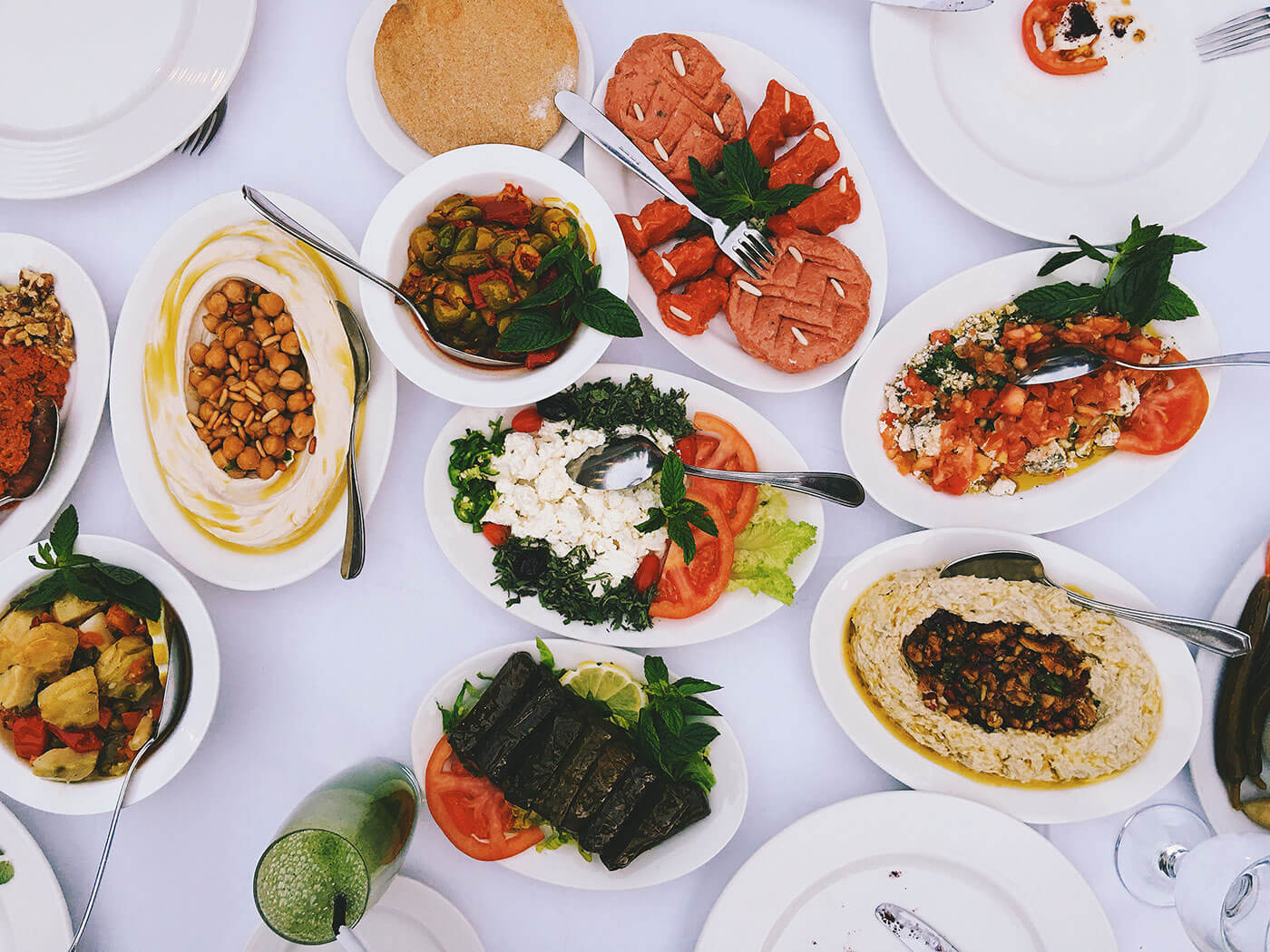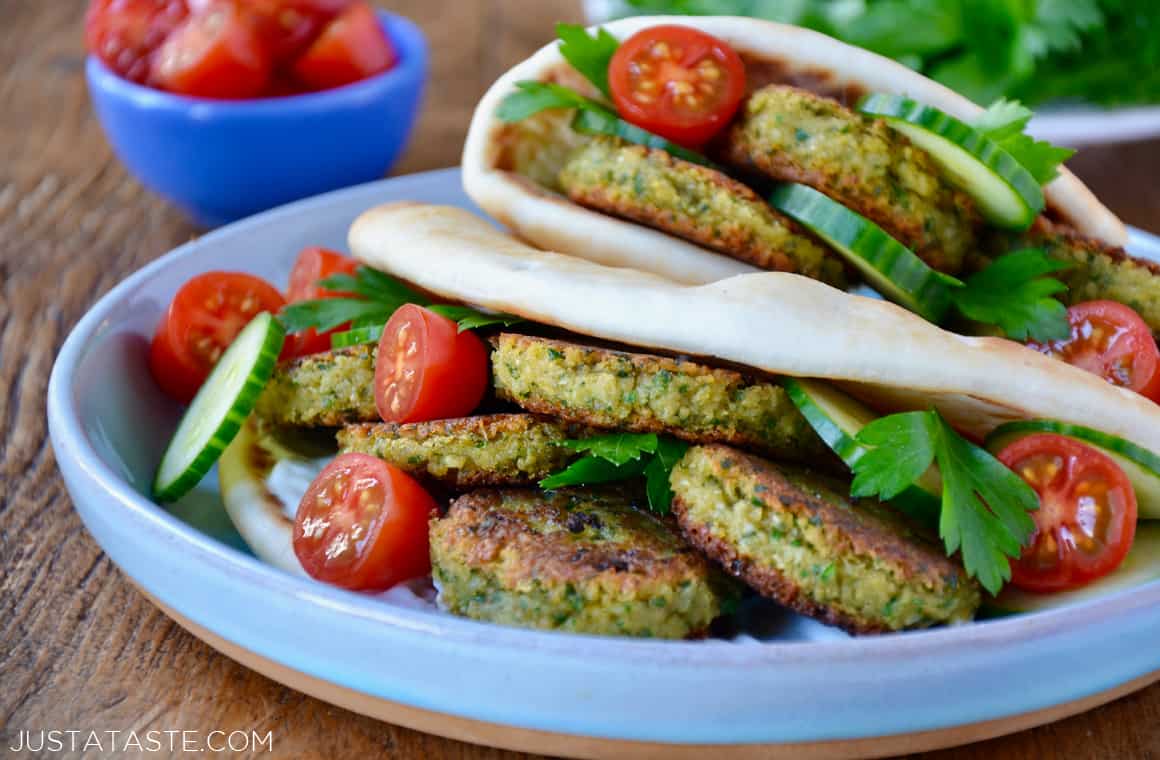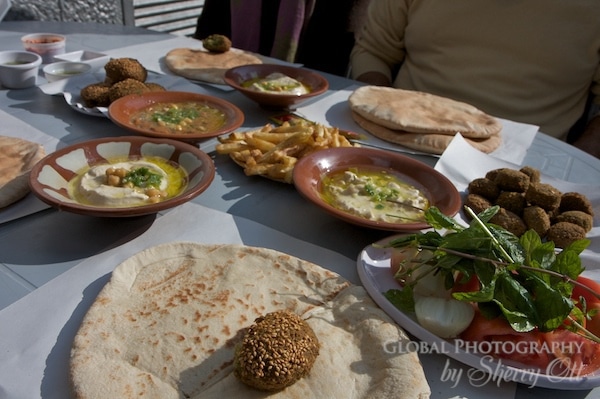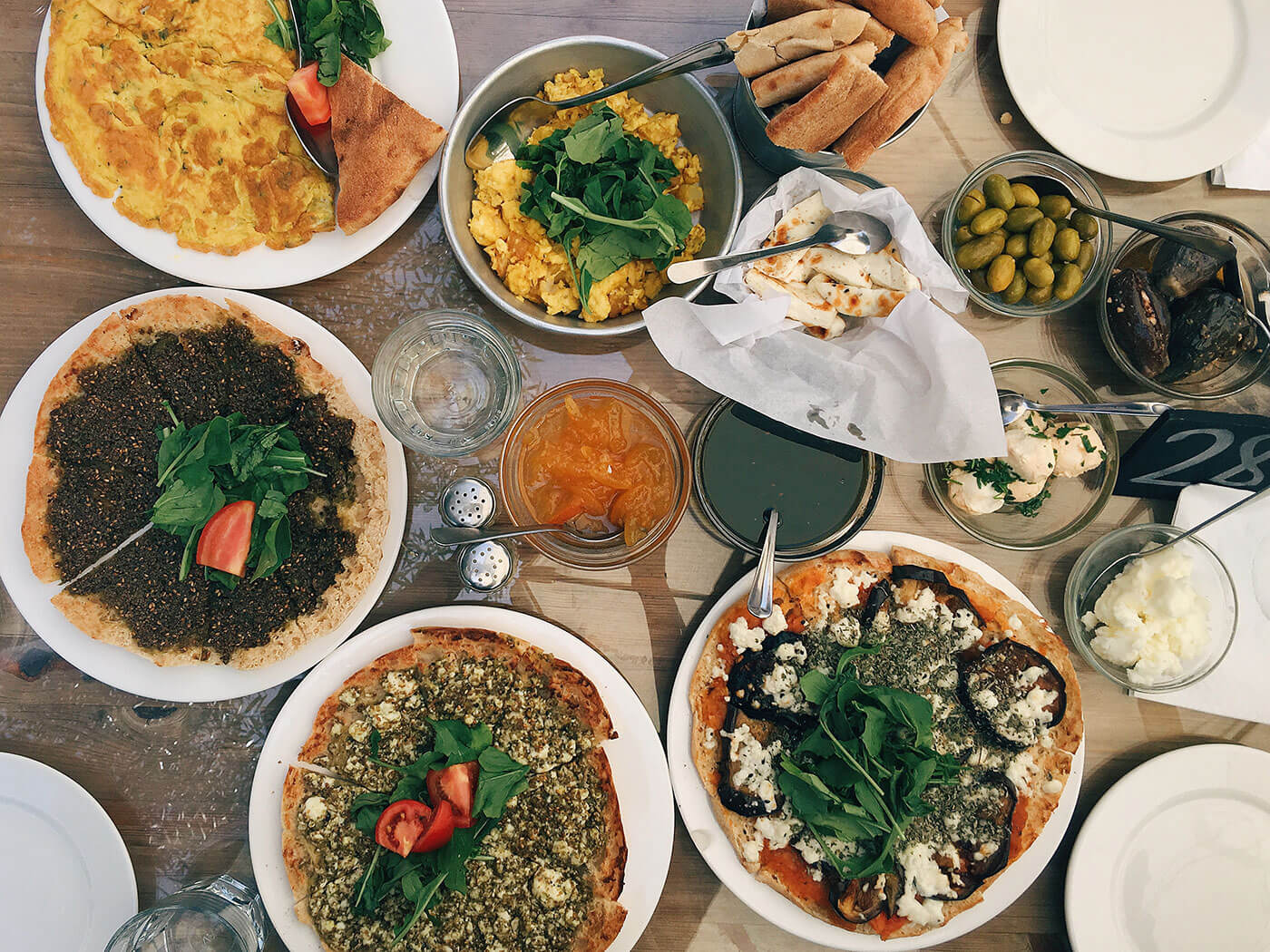Jordanian Feast: 5 Must-Try Dishes Beyond Hummus

Welcome to the world of Jordanian cuisine! Get ready to explore the mouth-watering flavours of Middle Eastern cuisine. Jordanian cuisine is full of flavours and aromas that reflect Jordan's rich cultural heritage. In this blog, we will give you a glimpse of Jordanian cuisine and why you must try it.
Jordanian Cuisine Overview
The neighbouring countries of Lebanon, Palestine, and Syria influence Jordanian cuisine. However, it has a unique twist that sets it apart from its neighbours. It's a mix of aromatic spices, herbs, and vegetables, creating simple yet hearty meals perfect for any occasion.
The most famous dishes in Jordanian cuisine are:
- Mansaf: A traditional Jordanian dish made of lamb cooked in yoghurt sauce.
- Makloubeh: A sumptuous dish of meat, rice, and vegetables cooked in a pot.
- Zarb: A Bedouin-style barbecue that involves digging a hole in the ground, layering meat, vegetables, and charcoal, and covering it with sand to cook for a few hours.
Why Jordanian Cuisine is a Must-Try
Jordanian cuisine is a must-try for several reasons. Firstly, it's an excellent choice for health-conscious people as it only uses fresh ingredients and is cooked healthily. Secondly, it's a unique culinary experience you won't find anywhere else. Jordanian cuisine is a fusion of several Middle Eastern cuisines with a unique twist. Lastly, Jordanian people are very hospitable, and when you visit the country, they make sure you try their traditional cuisine.
Jordanian cuisine is a must-try for anyone who loves good food and wants to experience Middle Eastern cuisine. If you ever visit Jordan, try their traditional dishes, and you won't be disappointed.

Zarb: Bedouin Barbecue
If you're looking for an unforgettable culinary experience in Jordan, you must try the Bedouin-style barbecue called Zarb. In this section, we'll delve into this iconic dish's history, ingredients, and recipe.
Zarb History and Origin
The Bedouin people are known for their nomadic lifestyle, and this barbecue method has been perfected over hundreds of years. Zarb was originally a way for the Bedouins to cook food on their travels, but it has since become a celebrated dish in Jordan.
Zarb Ingredients and Recipe
Zarb involves layering meat, vegetables, and charcoal in a large hole in the ground, covering it with sand, and allowing it to cook for several hours. The result is a succulent, smoky meat that falls off the bone.
The ingredients used in Zarb vary depending on the region and the occasion. Typically, lamb or chicken is used as the meat, along with various vegetables such as potatoes, carrots, and onions. The dish is seasoned with cumin, coriander, and turmeric.
A deep hole is dug in the ground to prepare Zarb and lined with hot coals. The meat and vegetables are arranged in a large pot, which is placed over the hot coals. The pot is covered with a lid, then with sand to ensure even cooking and seal in all the flavours.
Zarb is an incredible dish that represents the rich cultural heritage of Jordan. It's a must-try for anyone visiting the country, and you'll be sure to leave with a satisfied appetite and a new appreciation for Bedouin cuisine.

Mansaf: Jordan’s National Dish
If you are in Jordan and looking for an authentic local dish, you must try Mansaf. It is considered the national dish of Jordan and a must-try for any foodie visiting the country.
Mansaf's History and Origin
Mansaf has been a staple dish of Bedouin communities in Jordan for centuries. It was traditionally served during special occasions like weddings and holidays. The dish is a symbol of generosity and hospitality, and it's a way of bringing people together.
The word “mansaf” comes from the Arabic term “safa,” which means “plate” or “dish.” The dish traditionally uses lamb or goat meat, as these were the animals that Bedouin tribes kept. Mansaf is cooked in a large pot, called a “qda,” and served on a large platter with rice and yoghurt sauce.
Mansaf Ingredients and Recipe
The main ingredient in Mansaf is lamb, cooked in a stew with herbs and spices like cardamom, cinnamon, and cumin. Once cooked, the lamb is served on a bed of rice, garnished with almonds and parsley. The dish is then topped with yoghurt sauce, which gives it a tangy flavour.
Mansaf is traditionally eaten with the right hand, and you are encouraged to use the flatbread to scoop up the meat and rice. The yoghurt sauce is also used as a dipping sauce for the bread.
Mansaf is a delicious and hearty dish you should not miss when visiting Jordan. It's a symbol of hospitality and generosity and a great way to experience the culture and traditions of the country.

Falafel & Hummus
If you're looking for a tasty vegetarian dish in Jordan, you can't go wrong with falafel and hummus. These two dishes are popular across the Middle East and staple in Jordanian cuisine.
Falafel and Hummus History and Origin
Falafel is believed to have originated in Egypt, but it has been a part of Jordanian cuisine for a long time. It is made from ground chickpeas and spices and formed into small balls or patties, which are deep-fried until crispy on the outside and tender on the inside.
Hummus, on the other hand, is a creamy dip made from mashed chickpeas, tahini, garlic, lemon juice, and olive oil. It is a popular snack or appetizer in Jordan and can be eaten with pita bread or vegetables.
Falafel and Hummus Ingredients and Recipe
To make falafel, you will need chickpeas, onion, garlic, parsley, coriander, cumin, salt, flour and baking powder. The chickpeas need to be soaked overnight, pureed in a food processor with other ingredients, formed into balls or patties, and then fried until golden brown.
Mix the mashed chickpeas with tahini, garlic, lemon juice, and olive oil until smooth for hummus. You can add more or less ingredients to suit your taste and preference.
Falafel and hummus are great options for vegetarians and meat-eaters alike. They are packed with flavour, easy to prepare, and a must-try if you're visiting Jordan. Whether you eat them as a snack or as part of a meal, you won't be disappointed with these delicious dishes.

Jordanian Street Food
As a food lover, you can't miss Jordan's delicious street food scene. From falafel and hummus to shawarma and sweets, the local cuisine is a fusion of different flavours and influences.
Jordanian Street Food Culture and Habits
The street food scene in Jordan reflects its diverse culture and hospitality. Jordanians take pride in their food and love sharing it with others. Many street vendors and food stalls will be selling traditional dishes that mix Arabic, Mediterranean, and Persian cuisine.
Most Jordanians eat on the go or have a quick bite at a street stall or cafe. Food is a social event, and you'll often find people sharing plates and chatting with their friends and family over a meal.
Popular Jordanian Street Food
Falafel and hummus are Jordan's most popular street foods and are available almost everywhere. Falafel is often served with tahini sauce, pickles, and fresh vegetables, while hummus is enjoyed with bread or pita chips.
Shawarma, a Middle Eastern sandwich made with roasted meat, is a favourite street food in Jordan. It's usually served with tahini sauce, pickled vegetables, and french fries. Other popular street foods include mana'eesh (flatbread topped with za'atar or cheese), kanafeh (a sweet cheese pastry), and knafeh (a savoury pastry filled with spinach, cheese, or meat).
Overall, Jordanian street food is a must-try for any foodie visiting the country. Whether you're looking for a quick snack or a full meal, you'll find plenty of delicious options on the streets of Jordan.

Kanafeh: Sweet Treat from Heaven
If you have a sweet tooth, you can't leave Jordan without trying kanafeh. This mouth-watering pastry is a popular street food and dessert in Jordan, which you should add to your foodie bucket list.
Kanafeh History and Origin
Kanafeh has a long history and is believed to have originated in Palestine. It's a traditional dessert often served during special occasions, such as weddings and Ramadan. Over time, kanafeh has become a popular sweet treat throughout the Middle East and is now enjoyed in different variations worldwide.
Kanafeh Ingredients and Recipe
Kanafeh is made from shredded phyllo dough, layered on sweet cheese and drenched in sugar syrup. The dish is baked until the cheese is melted and the pastry crispy. The pastry is stuffed with nuts, spices, or other ingredients for added flavour in some variations.
You can find many recipes online if you're interested in making kanafeh at home. However, the traditional recipe requires a lot of skill and technique, so it's often best to leave it to the experts and enjoy it in a local bakery or street vendor.
Kanafeh is a sweet treat that you can't miss when visiting Jordan. It reflects the country's love for dessert and hospitality, and it's sure to satisfy any sweet tooth craving. So, add it to your list of must-try street foods the next time you visit Jordan.

Maqluba: Upside-down Rice
If you are a fan of Middle Eastern cuisine, then you must try Jordan's Maqluba. This classic Jordanian dish is a staple in many households and is a must-try street food when visiting the country.
Maqluba History and Origin
Maqluba is a traditional dish popular in Palestine, Jordan, and other regions. The word "maqluba" means "upside-down" in Arabic, which describes how the dish is served. It has been a favourite in Jordan for generations and is often served during special occasions, such as weddings and religious holidays.
Maqluba Ingredients and Recipe
The dish is made up of layers of rice, vegetables, and meat, which are cooked together in a large pot. The pot is then flipped onto a serving platter, creating a beautiful and delicious masterpiece. The vegetables used vary but most commonly include eggplant, cauliflower, carrots, and potatoes. The meat used is typically chicken, lamb, or beef.
If you want to try making Maqluba at home, many online recipes are available. However, it is essential to note that the dish requires some preparation and cooking skills. In Jordan, you can find Maqluba in local restaurants or buy it from street vendors, where it is often served with a side of plain yoghurt or salad.
Maqluba is a tasty and satisfying dish you shouldn't miss during your visit to Jordan. Its unique blend of flavours and presentation make it a must-try street food when exploring the country's cuisine. So, don't hesitate to add Maqluba to your foodie bucket list and enjoy this delicious dish!

Turkish Coffee and Mint Tea
If you're a coffee or tea lover, try the traditional hot beverages of Jordan and Turkey - Turkish Coffee and Mint Tea. These drinks are deeply ingrained in the culture of the countries, and enjoying a cup of coffee or tea is a part of daily life for many locals.
Jordanian Coffee and Tea Culture
Jordanians are known for their hospitality, and offering guests coffee or tea is a common practice. Jordanian coffee, or Arabic coffee, is often served with dates, nuts, or sweets, symbolising friendship and welcome. Conversely, tea is typically served with mint and sometimes sage or other herbs. It is a refreshing drink, especially during hot weather, and is often offered to guests or enjoyed after meals.
Turkish Coffee and Mint Tea Ingredients and Style
Turkish coffee is a strong, thick, rich coffee made by boiling fine-ground coffee beans with water and sugar. It is traditionally served in a small cup, with a glass of water and a sweet treat. On the other hand, Mint tea is made by brewing black tea with fresh mint leaves and sugar, creating a refreshing and fragrant drink that can be enjoyed both hot and cold.
Turkish coffee and mint tea are excellent options if you're looking for authentic drinks to try in Jordan or Turkey. These drinks are not only delicious but also an essential part of the countries' culture and traditions. So, don't hesitate to add these beverages to your must-try list, and enjoy them in the traditional style for a full cultural experience.

Why You Should Try Jordanian Food
Jordanian cuisine is a remarkable blend of Mediterranean and Middle Eastern flavours and cooking styles, with unique spices, herbs, and ingredients. Trying Jordanian food is an adventure, with many dishes to explore, such as falafel, hummus, and shawarma. Plenty of vegetarian and vegan options exist for those following a plant-based diet.
Jordanian Food Tour Guide
To explore Jordanian food, consider booking a food tour with a local guide. This is a great way to learn about the history and culture behind the dishes and get insider tips on the best spots to eat. Whether you're exploring the bustling streets of Amman or the ancient city of Petra, a food tour is an excellent way to discover the local cuisine and culture.
When visiting Jordan or Turkey, trying traditional drinks like Turkish coffee and mint tea and exploring Jordanian food should be on your must-do list. Embrace the local culture, and you'll have an unforgettable experience beyond just tasting the delicious food and drink.
